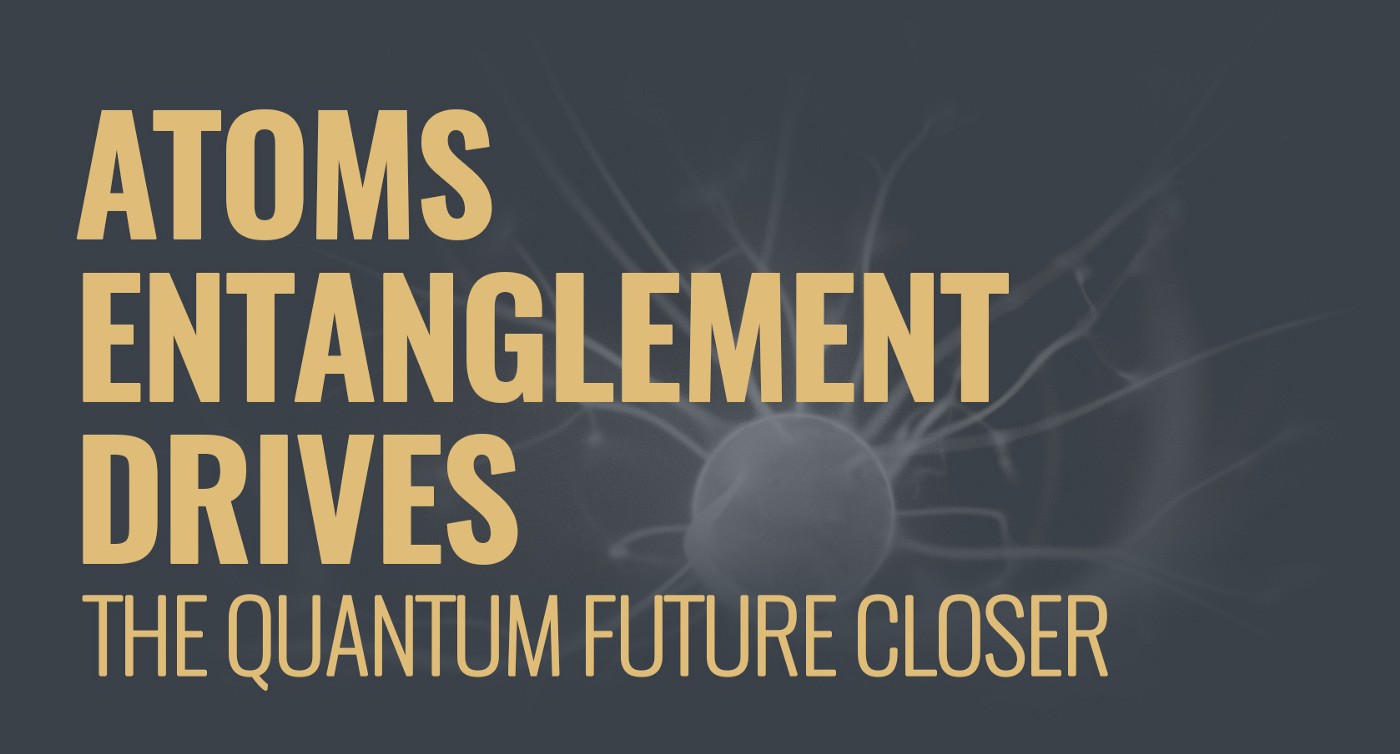Atoms Entanglement drives the quantum future closer
Category: About

We live in the age of significant innovations and developments. Technology and new developments highly influence the modern life.
Until recently, quantum computing was reduced only to laboratory work and experiments, with many experts predicting that commercial applications of quantum computing were years away. However, at the time this report was written in 2017, there was a growing consensus that the industry is on the verge of a breakout in quantum computing.
Quite recently, the scientists had built the biggest and most complex quantum-computer network yet, getting 20 different entangled quantum bits, or qubits, to talk to each other.
Moreover, the team was then able to read out the information contained in all those so-called qubits, creating a prototype of quantum “short-term memory” for the computer. While past efforts have entangled larger groups of particles in ultracold lasers, this is the first time researchers have been able to confirm they are indeed in a network.
Their latest study pushes quantum computers bar higher, inching closer to the so-called “quantum advantage,” where qubits outperform the classical bits of silicon-chip-based computers, the researchers said.
From bits to qubits
Traditional computing is based on a binary language of 0s and 1s — an alphabet with just two letters or a series of globes flipped to either the north or south pole. Modern computers use this language by sending or stopping the flow of electricity through metal and silicon circuits, switching magnetic polarity or using other mechanisms that have a dual “on or off” state.
However, quantum computers use a different language — with an infinite number of “letters.”
If binary languages use the north and south poles of the globes, then quantum computing would use all the points in between. The goal of quantum computing is also to use all the area between the poles.However, where could such a language be written? It’s not like you can find quantum matter at the hardware store. So, the team has been trapping calcium ions with laser beams. By pulsing these ions with energy, they can move electrons from one layer to another.
In high school physics, electrons bounce between two layers, like a car changing lanes. However, in reality, electrons don’t exist in one place or one layer — they exist in many at the same time, a phenomenon known as quantum superposition. This odd quantum behavior offers a chance for devising a new computer language — one that uses infinite possibilities. Whereas traditional computing uses bits, these calcium ions in superposition become quantum bits or qubits. While past work had created such qubits before, the trick to making a computer is to get these qubits to talk to one another.
“Having all these individual ions on their own is not the thing you are interested in,” Nicolai Friis, first author on the paper and a senior researcher at the Institute for Quantum Optics and Quantum Information in Vienna, told Live Science. “If they don’t talk to each other, then all you can do with them is a costly classical computation.”
To get the qubits “talking” in this case relied on another bizarre consequence of quantum mechanics, called entanglement. Entanglement is when two (or more) particles seem to operate in a coordinated, dependent way, even when separated by vast distances. Most experts think entangling particles will be key as quantum computing catapults from lab experiment to computing revolution.
“Twenty years ago, entanglement of two particles was a big deal.But when you really go and want to build a quantum computer, you have to work with not just say five, eight, 10 or 15 qubits. In the end, we will have to work with many, many more qubits,” — study co-author Rainer Blatt, a physics professor at the University of Innsbruck in Austria.
Fact is, the team managed to entangle 20 particles together into a controlled network — still short of a true quantum computer but the largest such network to date. Moreover, while they still need to confirm that all 20 are thoroughly entangled with each other, it’s a substantial step toward the supercomputers of the future. To date, qubits have not outperformed classical computer bits, but Blatt said that moment — often called the quantum advantage — is coming.
Recent news
-
Quantum-Entanglement industry record — packing the qubits tight
30 Jul 2018
-
D-Wave: A road to quantum system
27 Jul 2018
-
Biochips technology— the AI-powered future
25 Jul 2018
-
Quantum computing vs the future of blockchain tech
23 Jul 2018
